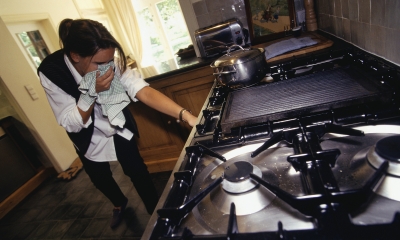
In the high-tech natural gas industry, the final test of safety is the human nose. Natural gas, unlike old style coal gas, has no smell, and a leaking pipe could easily go undetected and cause an explosion. But a smell can be added. And experts, employed for their sensitive smelling ability, make sure that in an emergency the gas has just the right smell to spark off the mental signal – ‘gas leak’.
The experts, called rhino-analysts, sniff the gas to double check that sophisticated testing equipment has done its job.
Natural gas is found under the ground or beneath the sea. The main ingredient is methane, also called marsh gas because it is found bubbling up from the organic ooze in marshes. The powerful smell that accompanies methane in a swamp is caused by rotting vegetable matter. The methane itself is odourless.
Natural gas was introduced in the USA in the 1920s and in Europe in the 1960s. As it had no smell, combinations of organic sulphur compounds were tested as odorants. The ideal odorant had to have a unique and powerful smell; it must not be absorbed by soil, or underground leaks might go undetected; and it had to be harmless to life and non-corrosive. The right formula was eventually devised.
These odorant, in liquid form, is sprayed into the gas as it leaves the processing plant. The technical term is ‘strenched’. The quantity of odorant is precisely measured under computer control. It has such a powerful smell that only about 1lb is needed for every million cubic feet of gas (1.5 kg for every 100,000 cubic metres).
Sophisticated instruments, such as a gas chromatograph, monitor the smell at various points in the distribution network. And humans check their accuracy.
Despite the addition of odorants, gas leaks in buried pipelines may still go undetected. So gas engineers frequently travel along pipeline routes with sniffing equipment 1000 times more sensitive than the human nose. But the equipment looks for the gas rather than the smell. Sniffer probes close to the ground feed air to an instrument that can detect the gas in concentrations of only a few parts per million.
Picture Credit : Google

